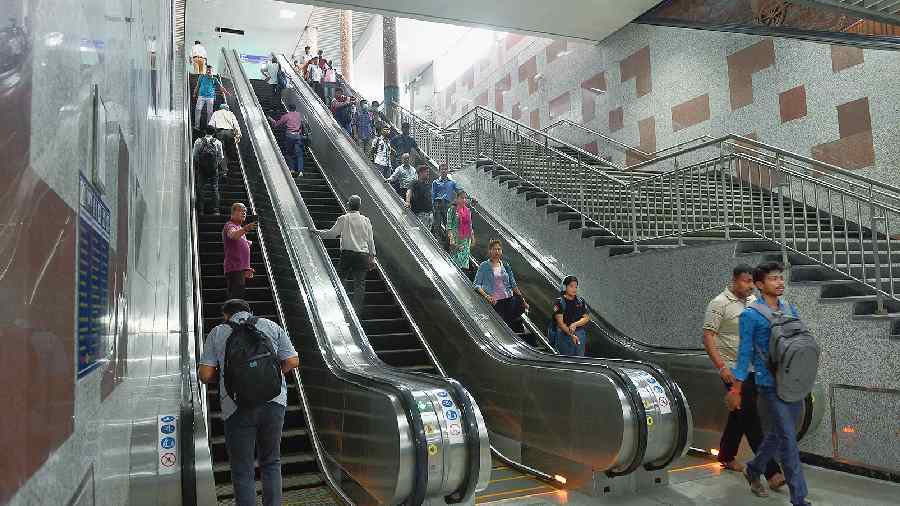Metro services were crippled for over 30 minutes on Friday morning after a man jumped in front of a train at Kalighat station, the second such disruption in less than a week.
The incident took place around 10.28am. The man jumped in front of a New Garia-bound train, said a Metro official.
The train was stopped and power supply to the tracks on the stretch had to be suspended before the man could be pulled out. He was declared dead in hospital, said the official.
For the next 35-40 minutes services were disrupted, tormenting office-goers. Some trains were stranded on the tracks and passengers inside alleged there were no announcements from the carrier.
Many others kept waiting for trains at stations. “I waited for almost 15 minutes for a train at Tollygunge from 10.35am. I was in a hurry and left the station after that,” said Bishnu Prasad, who was headed to Dalhousie in central Kolkata.
Metro officials said the stretch between Maidan and Tollygunge was not operational for around 35 minutes. “Truncated services were on between Dakshineswar and Maidan, and between Tollygunge and New Garia. Normal services were restored at 11.05am,” said a Metro official.
From both Maidan and Tollygunge trains can switch directions.
This is the second suicide in the city’s transport lifeline in less than a week. On Monday, a woman jumped in front of a train at Girish Park station.
Suicides and suicide bids have for long plagued the city’s north-south Metro corridor. The east-west network, which was extended till Sealdah on Thursday, has platform screen doors that prevent suicide bids.
In 2015, Metro Rail had sent a Rs 150-crore proposal to the railway ministry to install screen doors on the platforms but it was rejected. Barring the cost implication, the main hurdle is that Metro trains had been built to different specifications by four different manufacturers, said officials.
“The distance between doors is different for rakes manufactured by each company. This makes it impossible to have uniform platform screen doors. Then the doors of all trains will not be aligned to the screen doors,” a Metro official said.
